Description
Indications:
• retrograde filling of the apical part of the tooth;
• elimination of root perforations;
• elimination of perforations of the bottom of the cavity;
• apexification;
• elimination of internal and external root resorption;
• sealing of the apical part of the root canal;
• treatment and isolational covering the pulp
Composition and basic properties
Material "Canal-MTA" characterized by a high sealing ability, which practically does not change in presence of blood. The material has a high value of pH≈12, whereby has a pronounced bactericidal effect. "Canal-MTA" has the mechanical properties similar to natural dentin and cementum of the root. Contains no monomers. Material stimulates osteogenesis and cementogenesis, has high strength and durability. "Canal-MTA" consists of a mixture of hydrophilic particles: mainly - tricalcium silicate and calcium-containing compounds of iron and aluminum. Material hardens upon contact with water, increasing the compressive strength over time. The time between the start of mixing and the start of the hardening is about 12 min.
Recommended use
Before use in order to ensure uniform density of a powder shake the jar. Fill the measuring spoon with powder with no compaction, align the level by a spatula, pour the powder on a glass plate (mixing pad). Close the jar with the powder immediately. Add some liquid to powder taking into account the ratio of one spoon = one drop of liquid. Thoroughly mix the powder with water to obtain a dense homogeneous paste. If the material is not used immediately after mixing, the resulting paste should be covered with a damp napkin.
Perforation of the root canal and furcation:
• Isolate the place of treatment;
• treat the perforation area with a solution of sodium hypochlorite;
• prepare and fill the canal with gutta-percha and appropriate endodontic sealer below the level of perforation;
• introduce "Canal-MTA" in the area of the defect and seal it with a suitable instrument or sterile cotton balls (to condense the material it is possible to use large ultrasonic nozzle without water irrigation on medium power);
• fill in the rest of the root canal with gutta-percha and the appropriate endodontic cement.
Perforation of the root canal due to internal resorption.
First visit:
• administer the local anesthesia and insulate the place of treatment;
• prepare the access to the root canal and to the place of resorption of hard tissues;
• remove the damaged tissue and pulp;
• introduce the calcium hydroxide paste to the root canal.
Second visit (a week later):
• remove the calcium hydroxide paste from root canal by washing with sodium hypochlorite solution;
• obturate the apical part of the root canal with gutta-percha and appropriate endodontic cement;
• introduce "Canal-MTA" in the area of the defect and seal it with a suitable instrument or sterile cotton balls (to condense the material it is possible to use large ultrasonic nozzle without water irrigation on medium power);
• do the control X-ray shot immediately after the procedure.
Surgical treatment of the root canal perforation
when it is not impossible to treat it coronally:
• open muco-periosteal flap to ensure operative access to the site of perforation of the root;
• introduce "Canal-MTA" in the prepared area of the perforation using a suitable instrument;
• remove excess material;
• place the flap to its original location and suture.
• make the X-ray immediately after the procedure, make the control X-ray three months later. Note: when doing a surgery before returning a flap to the place the blood around the bone and periosteum should cover MTA cement. Contact with blood and moisture accelerates the reaction of setting the cement.
Periapical surgery when it is impossible to treat coronally and lack of the access to the root canal through the crown of the tooth:
• open the muco-periosteal flap, remove the done (if necessary) and open the apical part of the root;
• make apicectomy from 2 to 3 mm;
• prepare the cavity class I at the apex of the root canal;
• introduce "Canal-MTA" in the prepared area of the perforation using a suitable instrument;
• remove excess material;
• place the flap to its original location and suture.
• make the X-ray immediately after the procedure, make the control X-ray three months later. Note: when doing a surgery before returning a flap to the place the blood around the bone and periosteum should cover MTA cement. Contact with blood and moisture accelerates the reaction of setting the cement.
apexification
First visit:
• administer the local anesthesia and insulate the place of treatment;
• prepare the root canal;
• wash the canal with sodium hypochlorite solution;
• introduce the calcium hydroxide paste to the root canal.
Second visit (a week later):
• remove the calcium hydroxide paste from root canal, thoroughly wash with sodium hypochlorite solution;
• dry the root canal with paper points;
• introduce "Canal-MTA" in the apical area and condense it with a suitable instrument or sterile cotton balls (to condense the material it is possible to use large ultrasonic nozzle without water irrigation on medium power);
• do the control X-ray shot in order to check the quality of obturation.
• cover the opening of the canal with sterile wet cotton ball and seal the tooth cavity with temporary restorative material for at least 24 hours.
Third visit:
• remove the temporary restorative material and a cotton ball;
• fill in the rest of the root canal by gutta-percha and the corresponding endodontic cement;
• carry out the restoration of the tooth crown.
Direct pulp capping
• administer the local anesthesia and isolate the place of treatment;
• remove the tissues damaged by caries;
• clean the tooth cavity with a sodium hypochlorite solution; • cover the exposed portion by "Canal MTA";
• cover by the base cement of " Canal MTA ";
• complete restoration;
• check the pulp vitality during the next visits.
storage
Material should be stored in a cool dry place with t of +4ºC to +24ºC. Shelf life is 2 years.


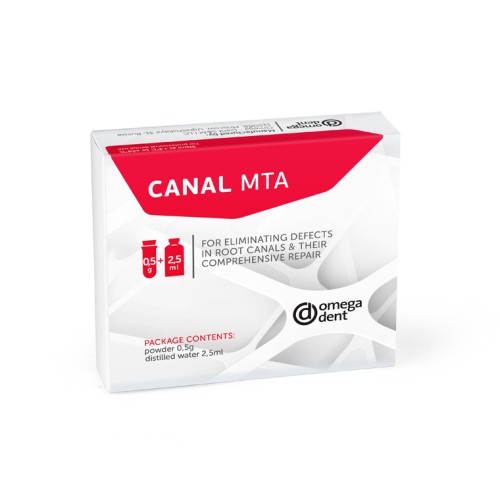
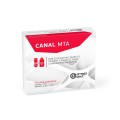
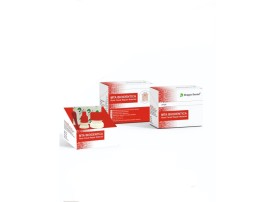
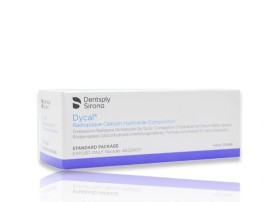
-thumb_270.jpg)
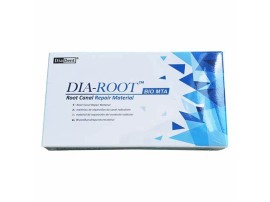
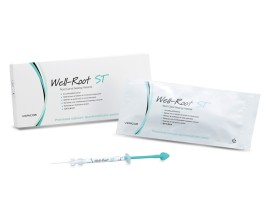
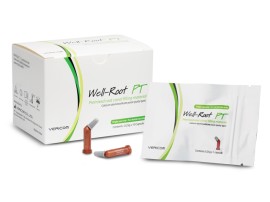
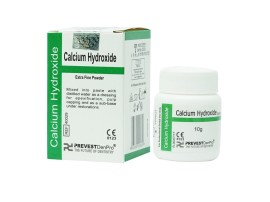
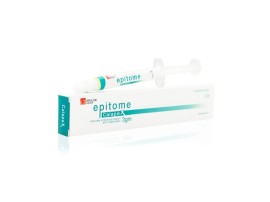
-thumb_270.jpg)
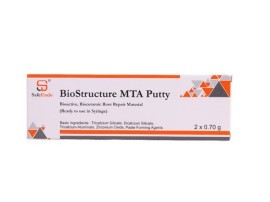
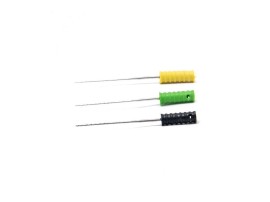
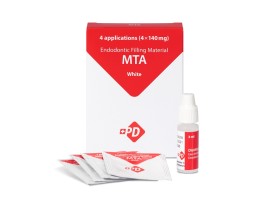



0 Review for “CANAL MTA | For eliminating defects in root canals & their comprehensive repair”
5 Stars
0%
4 Stars
0%
3 Stars
0%
2 Stars
0%
1 Stars
0%